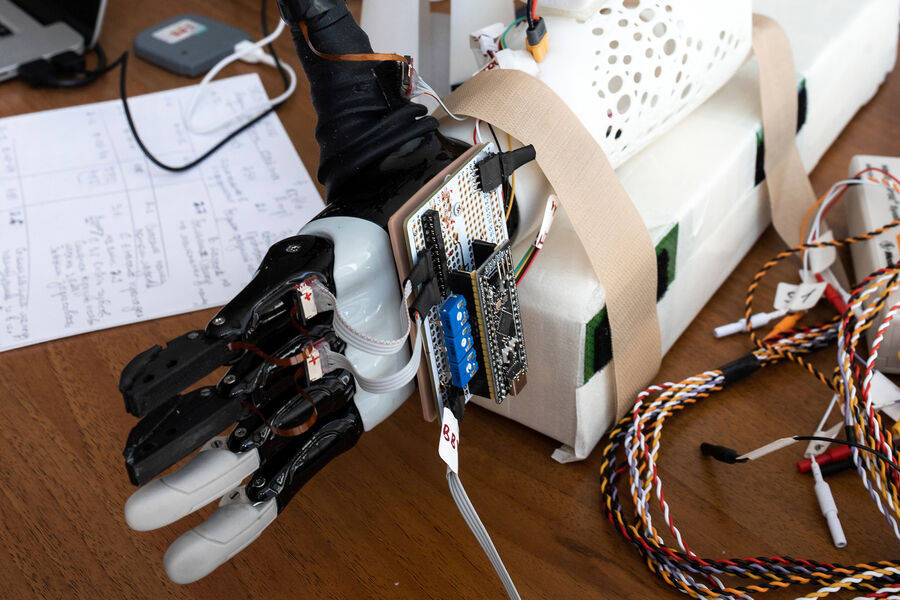Traditional cooling systems for buildings use refrigerants and electricity, which contribute to the atmospheric greenhouse effect that exacerbates...
Vous n'êtes pas connecté
- English
- Français
- عربي
- Español
- Deutsch
- Português
- русский язык
- Català
- Italiano
- Nederlands, Vlaams
- Norsk
- فارسی
- বাংলা
- اردو
- Azərbaycan dili
- Bahasa Indonesia
- Հայերեն
- Ελληνικά
- Bosanski jezik
- українська мова
- Íslenska
- Türkmen, Түркмен
- Türkçe
- Shqip
- Eesti keel
- magyar
- Қазақ тілі
- Kalaallisut ; kalaallit oqaasii
- Lietuvių kalba
- Latviešu valoda
- македонски јазик
- Монгол
- Bahasa Melayu ; بهاس ملايو
- ဗမာစာ
- Slovenščina
- тоҷикӣ ; toğikī ; تاجیکی
- ไทย
- O'zbek ; Ўзбек ; أۇزبېك
- Tiếng Việt
- ភាសាខ្មែរ
- རྫོང་ཁ
- Soomaaliga ; af Soomaali
Rubriques :
 Maroc - TECHXPLORE.COM - RSS news feed - 06/Feb 17:31
Maroc - TECHXPLORE.COM - RSS news feed - 06/Feb 17:31
Electricity-producing slime could power floors, shoes and more
University of Guelph (U of G) researchers have developed a slime-like material that produces electricity when compressed. When the team studied their prototype using the Canadian Light Source (CLS) at the University of Saskatchewan, they discovered the material has an array of potential applications.
Articles similaires
Scientists find collagen in dinosaur fossil, unlocking new clues about ancient life
For many years, scientists believed that organic molecules could not survive in fossils, as the fossilization process was thought to destroy them...
Porous plastic sheets can cool buildings by radiating light to space
The PMMA sheets fabricated by materials science researchers are white and porous, making them a suitable material for covering buildings for passive...
Russian student developed a bio-ton hand with the help of 3D printing 01:49
Andrei Syrvachev, a student of Perm National Research Polytechnic University (PNIPU), has created a prototype of the bioonic prototype of his hand,...
Self-powered sensor can generate electricity and light simultaneously using only movement
DGIST research teams have developed a self-powered sensor that uses motion and pressure to generate electricity and light simultaneously. This...
Inspired by water bugs, researchers create tiny swimming robots for medical, environmental uses
Inspired by the movement of insects gliding on the surface of water, University of Waterloo researchers have designed tiny robots controlled by light,...
Using AI, researchers develop asphalt that can self-repair, not needing maintenance
Researchers from King’s College London and Swansea University, in collaboration with scientists in Chile, have developed a new type of...
Researchers pioneer DNA-tagged gold nanoparticles for targeted cancer treatment
A team of researchers from the National University of Singapore (NUS) has developed a novel method to enhance the precision of cancer treatment using...
Scientists create battery-free sensor that generates light and power from movement
Scientists at DGIST (Daegu Gyeongbuk Institute of Science and Technology) have developed an incredible self-powered sensor that can generate both...
Self-powered sensor can generate electricity and light simultaneously using only movement
Credit: Advanced Sustainable Systems Cover DGIST research teams have developed a self-powered sensor that uses motion and pressure to generate...
Les derniers communiqués
-
Adobe Brings Conversational AI to Trillions of PDFs with the New AI Assistant in Reader and Acrobat
Adobe - 21/02/2024
-
Laura Frigenti takes the Helm as Chief Executive Officer of the Global Partnership for Education
Global Partnership for Education - 05/12/2022



